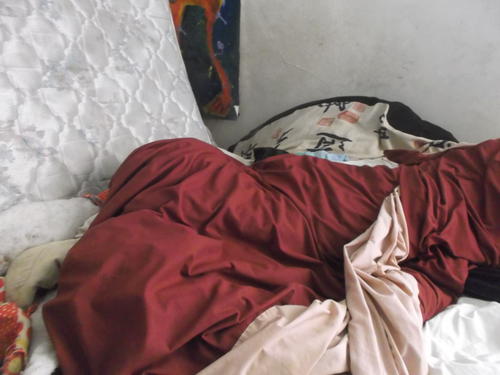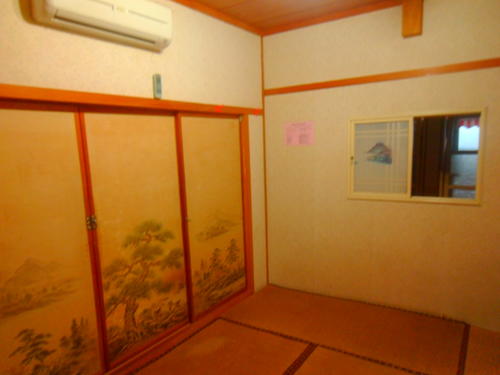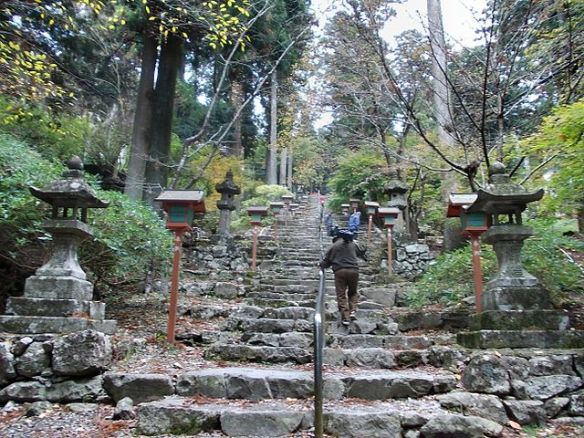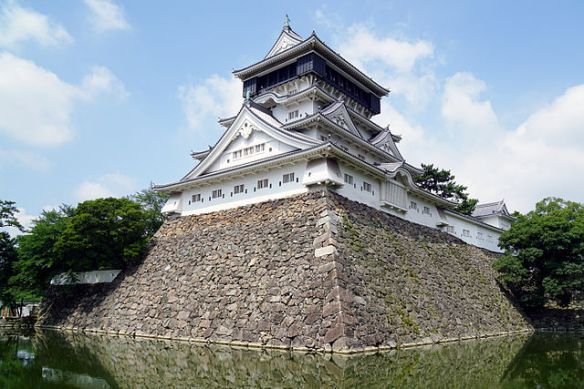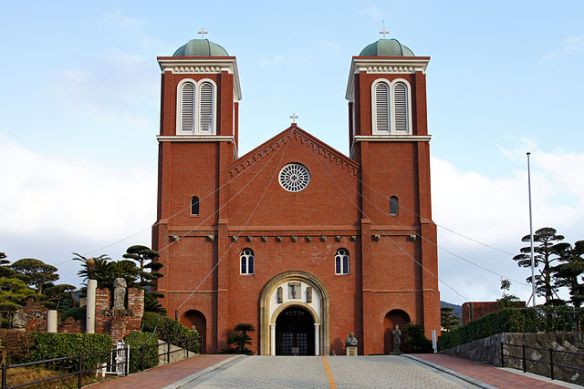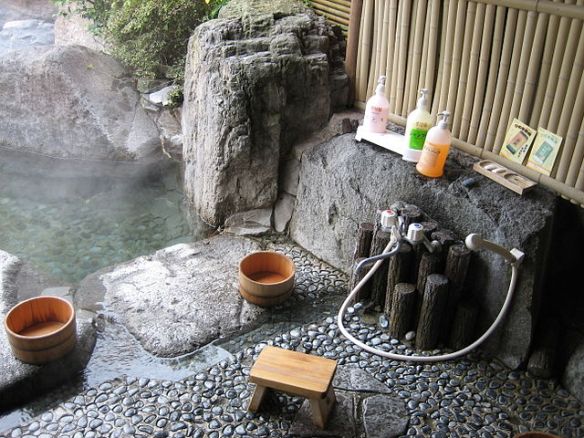CONTENT NOTE: This part of the story contains direct references to sexual assault, as well as non-consexual physical contact and an example of a harmful way of talking to a victim about their assault. It is possible to skip this section, and still follow the rest of the story.
***
March 17th, 2003
“There is a question I ask every foreigner I meet,” Sandy said, as she soaked nude in the indoor bath which was sculpted to look like a natural pool among rocks. “Why did you come to Beppu?”
“Someone I know said that I should try the hot springs here, or at least this one,” Myrna, also naked, answered. She was soaking in the same bath.
“Your friend has good taste,” Sandy replied. “Does your friend live in Japan, or is she just a very savvy traveler.”
“She lives in Kagoshima.”
“Well, I don’t think you live in Japan.”
“Why not?”
“You’re not used to hot springs.”
“It’s that obvious?”
“Mmmmmm.”
When Myrna saw another non-Asian at the hot spring, she instantly gravitated towards her. Though this bath was, thankfully, not boiling hot like the one in Kagoshima, she still felt a bit uncomfortable with the Japanese hot spring experience, and she wanted someone who could help her out, point out the etiquette, or at least share the awkwardness with her.
“So what brought you to Japan?”
“I came to visit my friend.”
“The one in Kagoshima.”
“No, in Kokura.”
“So I take it you’re staying in Kokura tonight, not Beppu.”
“Ah, I’m planning to go back to Kagoshima.”
“But Kagoshima is so far away, and you would have to leave Beppu so soon!”
“My friend in Kokura … I’m not so comfortable with her now.”
“Oh, so you had a fight.” Before Myrna could deny this, Sandy continued by saying, “So you fell out with the friend you came all the way to Japan to see. You have another reason for being in Japan.”
“Well, of course there are other reasons to be in Japan…” Myrna replied.
“I sense it is a special reason,” Sandy said. She seemed a bit like a berry picker, judging with her eye which berries were yet unripe, and which ones were sweet, juicy, and ready for picking. “Does this reason have a boyfriend in it?”
Myrna did not respond.
“Ha, I am almost always right about this, there is a boyfriend. Does your friend in Kagoshima or Kokura know about him?”
“No.”
“Where is he in Japan?”
“He’s not in Japan.”
“So is he going to come here and get you?”
If this were a public street, Myrna would have walked away at this point. However, she was just too self-conscious in the middle of this hot spring, with Japanese people occupying all of the other baths in the room, to make a getaway.
“No.”
She sure hoped not. She had never consciously thought that Sebastian would follow her to Japan – she had been careful to set things up so that he would not even know she was in Japan. Of course, she had been careful in the first place because, on some subconscious level, she was scared that he would try to track her down.
At this point, Sandy got out of the bath. Myrna was relieved. She hope this was the end of this conversation.
Then Sandy said “You should get out of the bath. If you stay too long in one bath, it could be bad for you, especially since we were in the water above heart level.”
Myrna hesitantly got out of the bath. She saw Sandy exit the bathing area, so Myrna went towards a different door. She found herself at the outdoor bath, where only a couple of Japanese women were in the water. She decided to sit in a chair, which felt very awkward since she was naked, and there were Japanese people in the bath.
Myrna heard someone say “There you are.” She turned her head, and saw Sandy walk in.
“I thought you left,” Myrna said.
“Oh no, I just went out to drink some water.”
Sandy got into the bath. Myrna stayed in the chair.
Alas, Sandy just leaned on the edge of the pool, and looked up at Myrna. Myrna sat frozen there. Her instincts told her it was better to sit still than to try to flee and risk pursuit.
“So this boyfriend … you had a fight with him too, didn’t you. A big one.”
Myrna said nothing.
“He hurt you?”
Myrna said nothing.
“Did he make an asshole remark?”
Myrna said nothing.
“Did he step on one of your pet peeves?”
Myrna said nothing.
“Was he cheating on you?”
Myrna said nothing.
“My last boyfriend cheated on me,” Sandy said, a little sadly. “It made me wonder if I wasn’t good enough for him.”
Myrna did not respond to this at first. She did not have much empathy in her at the moment. However, she felt that, maybe, she should say something at this point, that perhaps saying something would make her less vulnerable that not speaking.”
“He did not cheat on me,” Myrna said.
“That’s good,” Sandy said.
Sandy did not say more. Oddly, now that Sandy had shut up, Myrna felt that she needed to say something more, if only to fill the silence.
“So … what are you doing in Beppu?”
“I’m a student at the university here.”
“Your Japanese must be really good.”
“Nah. My classes are in English. So anyway, what did you boyfriend do?”
“Ah, I’d rather talk about what I’ve seen in Japan…”
“Japan, pfff, I’ve seen Japan. I want to know what your boyfriend did to you.”
Myrna, weary of resistance, yielded. “I came home from work, I was tired, I lay down in bed, and he had sex with me.”
“That’s all?” asked Sandy, puzzled. Then, there was a shift in her eyes. “Did you consent to that?”
Myrna was quiet.
“Oh, I am so sorry.” Sandy got out of the bath, and hugged Myrna in her chair.
“I never said he raped me!” Myrna exclaimed, as she wriggled under Sandy’s hug. And there it was – the word she had been carefully avoiding, blurted out of her mouth.
Myrna became limp, and went back to that memory of what happened when she came home from work that day…
“That is so horrible. You were right to leave him. If he were here, I’d punch him in the face myself. Men like that make me so angry!””
Myrna was not really aware whether it was Sandy or Sebastian there.
Sandy got off Myrna. A moment later, Myrna became aware of her surroundings again, and ran out, nearly slipping on the wet floor. She felt unclean all over again, and she did not feel that this hot spring could do anything to purify her. She put her clothes on in a hurry, but not fast enough, for Sandy followed her and said “You really should talk about this with someone…”
Myrna did not sense genuine sympathy from Sandy. Rather, she got the sense that Sandy enjoyed be a spectator to drama – and right now, she was the drama that Sandy was enjoying. Look here, a real life sexual assault victim, and you don’t even have to pay for admission!
As Myrna made her way to the train station, she scared that Sandy was still following her. The train took far to long to come, for Myrna was in constant fear that Sandy – or even Sebastian – was going to catch up to her at any moment.
She spent the rest of the day on trains, not even getting off to buy food.
At night, she got off at a rural train station she had never heard of, and saw nobody in the station. She did find a telephone booth, and made a quick phone call to Lou, telling her that she was not coming back to Kagoshima that night. She then laid out the blankets which, thankfully, Lou had insisted she take with her, and found a place to lie down.
At first, she was scared of being alone in the station, of sleeping outside the formal rules of shelter for the first time. Then, as the desolation sank in, it calmed her down. She had claimed a space for herself, and no one, not even a deer, would take that from her tonight.
To be continued…
***
Preview of Part 7: Urakami
Myrna walked from the cathedral back to the park. There were certainly less people here than in Glover Garden. Of course, a lot of the visitors at Glover Garden were Japanese, and Hana had mentioned that, when her family visited, they all went to Glover Garden, but they did not go to Urakami at all.
As Myrna walked around the park again, she found a memorial to the Korean forced laborers who died and suffered. The memorial was sponsored by the ‘Nagasaki Society for Korean Human Rights’, and included an apology to the Koreans for forcing them to work in Japan.
As Myrna passed by the Peace Museum, she asked herself, should she go in? After all, she had already seen the Peace Museum in Kokura.

